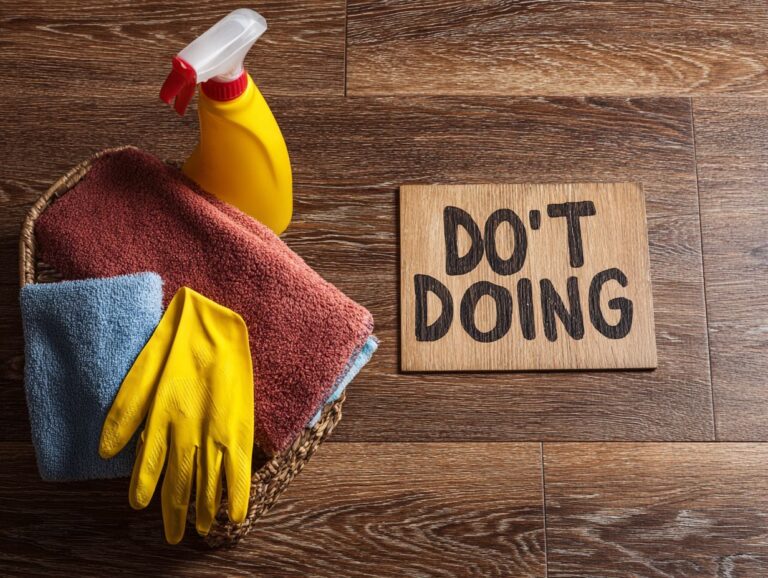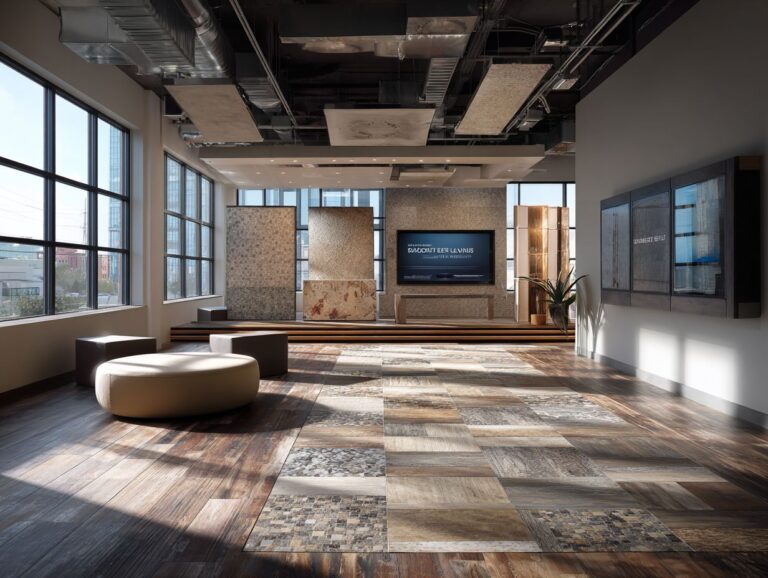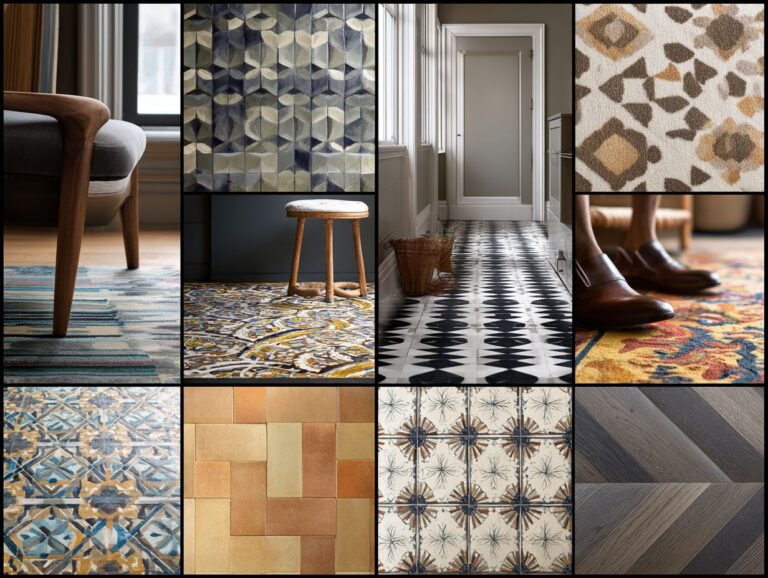Mobile Home Flooring Options – Weight and Flex Issues
Choosing the right mobile home flooring can significantly impact your comfort and maintenance efforts. There are many flooring options to choose from, and it is important to know about weight and flexibility problems, particularly with the subflooring in mobile homes. This guide will help you find the best flooring options for mobile homes, explain how to fix damaged parts, and make sure they last a long time. Find the best options for your specific needs!
Key Takeaways:
Contents
- Common Flooring Options
- Weight Considerations
- Flex Issues in Mobile Homes
- Installation Considerations
- Maintenance and Care
- Mobile Home Flooring Durability and Repair Costs
- FAQs about Mobile Home Flooring
- Frequently Asked Questions
- What are some common weight and flex issues with mobile home flooring options?
- What are the best flooring options for a mobile home with weight and flex concerns?
- Can I install hardwood flooring in a mobile home without causing weight and flex issues?
- How do I know if my mobile home can support heavier flooring options?
- What should I do if I notice my flooring is causing weight or flex issues in my mobile home?
- Are there any preventative measures I can take to avoid weight and flex issues with my mobile home flooring?
Importance of Choosing the Right Flooring
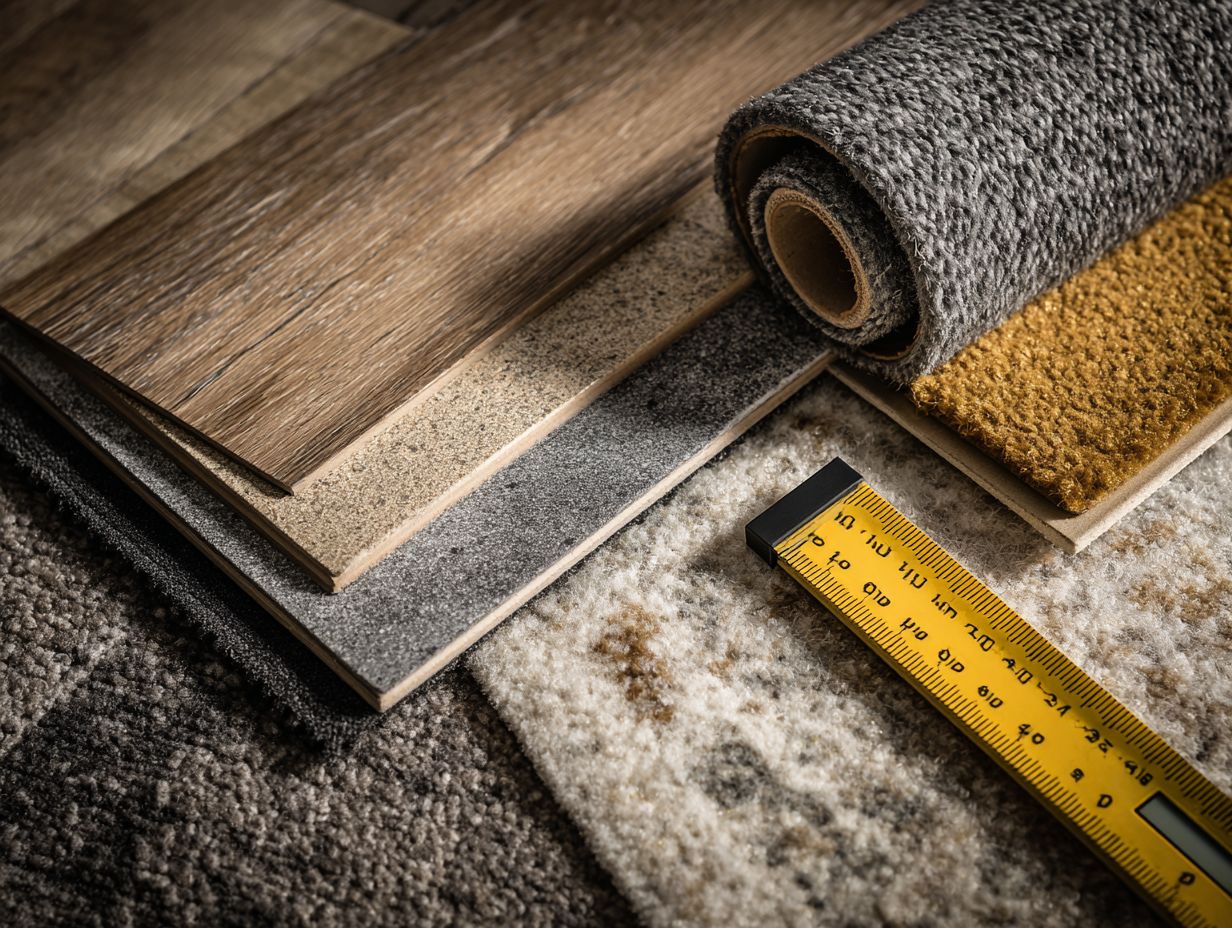
Choosing the right flooring can improve strength, appearance, and comfort. However, a bad choice could lead to issues such as water damage and increased repair costs.
Selecting long-lasting flooring materials is essential for mobile homes.
Vinyl plank flooring is water-resistant and usually costs between $2 and $6 per square foot, which makes it a good choice for areas with high moisture. On the other hand, carpet can retain water and lead to mold, with average repair costs for water damage hitting $2,500.
According to industry statistics, 20% of mobile home flooring failures stem from inadequate moisture barriers. Investing in quality flooring and having it properly installed can save you money over time and improve how your home looks.
Overview of Weight and Flex Considerations
Mobile homes require careful consideration of flooring weight and flex due to their aluminum structure and unique foundations.
Each flooring material has specified weight limits that must not be exceeded to maintain stability. For example, vinyl flooring typically supports up to 500 pounds per square foot, while laminate can handle roughly the same.
Older models often require flexible materials such as carpet, which can absorb movement and reduce stress on the structure. When selecting flooring, prioritize lightweight options; for instance, use engineered wood or specialized mobile home flooring.
These choices prevent damage and make your home last longer and stay safe.
Common Flooring Options
Mobile homes have different flooring choices, each with specific advantages and uses.
Vinyl Flooring
Vinyl flooring is a popular choice for mobile homes due to its water resistance, affordability, and ease of installation, typically costing $2-$5 per square foot.
Vinyl flooring doesn’t get damaged by moisture, is cost-effective, and easy to clean, which makes it perfect for areas with lots of foot traffic.
Putting it in is simple and can usually be done as a project you do yourself. Just measure your area, cut with a utility knife, and use glue if required.
Leading brands like Shaw offer a wide variety of styles and colors, while Mannington is recognized for its durability.
Both provide warranties ranging from 10 to 20 years, ensuring long-lasting quality for your mobile home.
Laminate Flooring
Laminate flooring, priced between $1-$3 per square foot, offers a wood-like appearance with the durability required for mobile homes.
Its ease of installation makes it particularly appealing; for instance, brands like Pergo and Quick-Step provide detailed guides that simplify the DIY process. Pergo’s locking system allows for faster installation without glue or nails, and Quick-Step’s Water Resistant laminate adds an extra layer of protection against spills.
To promote longevity, always use a protective underlayment and avoid excessive moisture. Evaluate your space’s wear and tear; consider thicker boards for higher traffic areas. By following these tips, you can have a long-lasting and attractive floor.
Carpet
Carpet can add comfort to mobile homes, often priced around $2-$6 per square foot, but may require more maintenance compared to hard surfaces.
Carpets add warmth and softness, but lower-quality ones can easily get damaged by water.
For better durability, consider brands like Mohawk, which offer stain-resistant and moisture-wicking properties.
To address water problems, use a water-proof underlay and make sure there’s enough airflow.
Regularly vacuuming and occasional steam cleaning can maintain their appearance, though it’s essential to act quickly in case of spills.
In the end, choosing carpet for a mobile home depends on finding a balance between comfort and usefulness.
Tile Flooring
Tile flooring offers a durable, attractive option for mobile homes, with prices ranging from $1-$15 per square foot depending on material and design.
Ceramic and porcelain tiles are excellent choices for such settings. Both materials are very water-resistant, which makes them good choices for places where there might be a lot of moisture, such as bathrooms and kitchens.
Porcelain tiles, denser and less porous than ceramic, typically offer even greater durability and stain resistance, which is ideal for high-traffic areas. You might need a cement backer board to provide extra strength during installation; use tools like a wet saw to cut precisely.
Regular maintenance involves sweeping and mopping with mild cleaners to preserve their finish, ensuring they remain attractive for years.
Hardwood Flooring
Hardwood flooring is a more expensive option, typically costing $5-$15 per square foot, but it adds significant value and a timeless appeal to mobile homes.
The way it’s made makes any room feel warm and inviting, which draws in potential buyers. Considerations like moisture susceptibility and added weight can be concerns.
For those worried about these issues, engineered hardwood presents an excellent alternative. This option resembles solid wood but manages moisture more effectively, making it suitable for various weather conditions.
It is lightweight and simple to put in, combining attractiveness with usefulness to increase your mobile home’s worth.
Weight Considerations
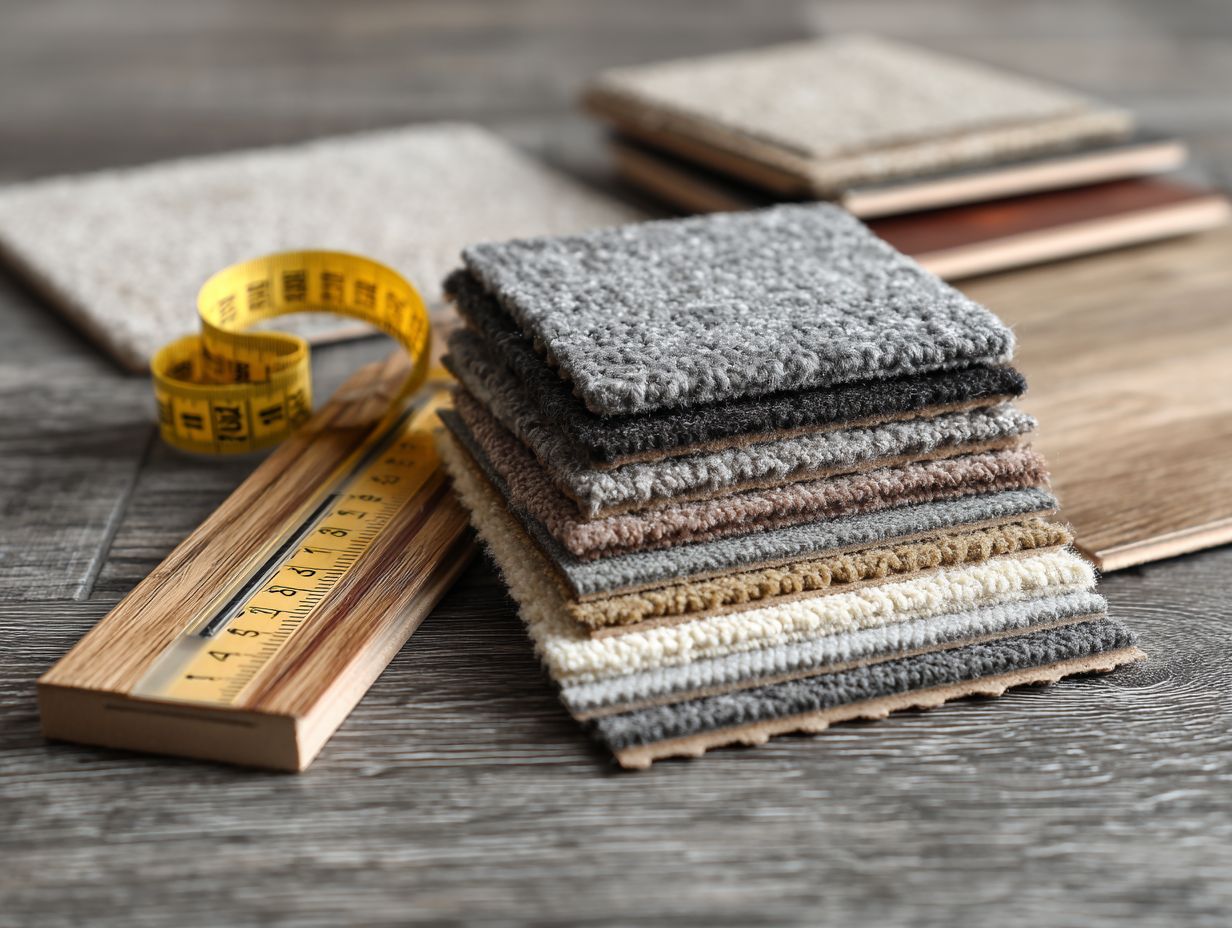
Knowing how heavy flooring materials are is important for keeping mobile homes stable and safe.
Impact of Flooring Weight on Mobile Homes
The weight of flooring materials directly impacts mobile home structural integrity, with heavier choices necessitating careful planning.
Choosing the best flooring requires considering the weight limits of your mobile home. For instance, materials like solid hardwood can be appealing but may exceed recommended limits, leading to issues like bowing or cracking.
The HUD guidelines suggest a maximum floor load of 40 pounds per square foot. For lighter alternatives, consider materials such as vinyl plank or laminate, which often range from 5 to 10 pounds per square foot.
Always review these guidelines and carefully check the weight before choosing flooring to maintain security and stability.
Comparative Weight of Different Flooring Types
Different flooring types vary significantly in weight, with vinyl being the lightest and hardwood the heaviest, impacting overall mobile home design.
To make informed choices, consider the following approximate weights per square foot:
- Vinyl (0.5 lbs)
- Laminate (1-2 lbs)
- Carpet (1.5-3 lbs)
- Tile (5-7 lbs)
- Hardwood (6-8 lbs)
For structural integrity, balance aesthetic preferences with the weight capacity of your mobile home’s foundation. For instance, if you prefer the warmth of hardwood but are concerned about weight, consider using engineered hardwood, which offers the desired look while being lighter.
Choosing flooring that matches both design and build is important for long-lasting use and visual balance.
Flex Issues in Mobile Homes
Flex problems in mobile homes can cause the floor to crack and warp, so choosing the right materials is very important.
Understanding Flex and Its Importance
Flex is the natural movement of mobile homes. It is important to consider this when choosing flooring, as it can impact how long the flooring lasts.
To accommodate this flex, opt for materials like luxury vinyl, which is both resilient and flexible, ensuring it won’t crack under pressure.
Another excellent choice is engineered hardwood, designed to withstand movement better than solid wood. Cork flooring offers gentle and flexible support, which makes it a great option for mobile homes.
By looking at how these materials bend, you can make your flooring last longer, save money by avoiding expensive replacements, and keep it looking good.
How Different Flooring Types Respond to Flex
Different flooring materials react uniquely to the flex of mobile homes, with some performing better than others under movement.
Vinyl and laminate flooring are designed to absorb flex more effectively than tile and hardwood. To mitigate potential damage during installation, use a soft underlayment that can help absorb vibrations and provide cushioning.
For example, a high-density foam underlayment works well with laminate, while a cork underlayment pairs excellently with vinyl flooring.
Let your flooring adjust to the room temperature before installing it to prevent it from bending or lifting. By using these methods, you can increase the durability and steadiness of your flooring in a mobile home setting.
Installation Considerations
Correct installation is important for how long flooring lasts and how well it works in mobile homes.
Start by preparing the subfloor.
Preparing the Subfloor
A well-prepared subfloor is critical to prevent issues like moisture intrusion and uneven surfaces when installing mobile home flooring.
- Start by inspecting the subfloor for any signs of damage, such as rot or sagging, which should be fixed before proceeding.
- Next, make sure the surfaces are even by using a leveling compound if needed, as uneven areas can cause issues later.
- Consider incorporating a moisture barrier, particularly in humid climates, by using materials like polyethylene sheeting.
- For added strength and durability, use high-quality plywood (at least 3/4 inch thick) and secure it with PVC wood glue to create a solid foundation for your flooring.
Choosing the Right Underlayment
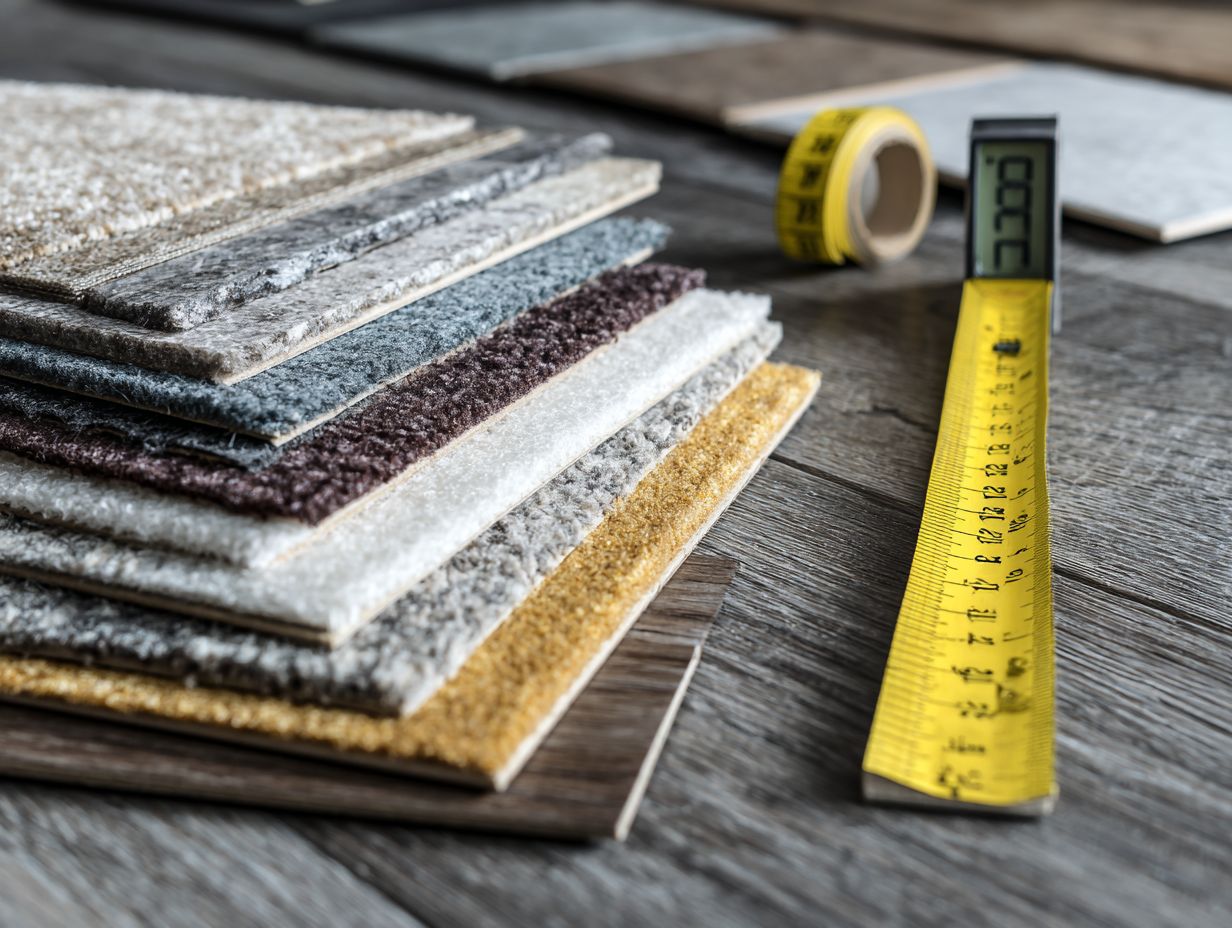
Choosing the right underlayment can make mobile home floors more comfortable and quieter.
Consider foam underlayment, which excels at sound absorption and is typically available at retailers like Home Depot or Lowe’s.
Look for products like QuietWalk, designed specifically for laminate and engineered wood flooring. Alternatively, for moisture protection, products like Roberts 50 mil underlayment are excellent choices, offering both a vapor barrier and cushioning.
Depending on your needs, opting for a combination of these underlayments can provide both sound dampening and prevention of moisture-related issues, thus ensuring a durable and comfortable flooring solution.
Maintenance and Care
Maintaining flooring in mobile homes is important for its durability, so homeowners should learn the correct methods to do this.
Cleaning Different Flooring Types
Cleaning routines vary by flooring type, with specific methods required to maintain the appearance and lifespan of each material.
-
Clean vinyl floors every two weeks using a pH-neutral cleaner and a microfiber mop to avoid scratches.
-
Laminate flooring benefits from a damp mop and a solution like Bona for laminate, applied monthly.
-
Tile requires a deep clean with a steam mop once a month, while ceramic tiles are best sanitized using vinegar solution weekly.
-
For carpets, consider vacuuming at least once a week, complemented by stain-removal products like Resolve for spot cleaning.
Tools like the Bissell CrossWave are excellent for tackling multiple surfaces seamlessly.
Addressing Wear and Tear
Fixing wear and tear quickly is important to avoid expensive fixes and to keep mobile home flooring lasting longer.
- Start by identifying issues like scratches, stains, or loose tiles.
- For scratches, use a wood filler such as Minwax ($7) for a seamless repair. Stains can often be treated with a mixture of vinegar and water, which is both safe and effective.
- For loose tiles, apply a strong adhesive like Gorilla Glue ($6 for a small tube), ensuring tiles are firmly pressed back into place.
- Regular maintenance, including cleaning and quick repairs, will reduce long-term costs and keep your flooring looking new.
Final Recommendations for Flooring Choices
For mobile homes, vinyl and laminate flooring often provide the best balance of performance and affordability, especially in areas prone to moisture.
When selecting flooring, consider the following types:
- Luxury Vinyl Plank (LVP): Offers excellent moisture resistance and warmth underfoot, perfect for humid conditions. Prices range from $2 to $5 per square foot.
- Laminate: Typically more budget-friendly, laminate can mimic hardwood and is easy to install. Expect to spend between $1 to $3 for each square foot, and make sure to select water-resistant choices.
- Engineered Hardwood: Provides a more aesthetic finish with better moisture resistance than solid wood, usually costing around $3 to $8 per square foot.
Choose based on your specific needs and preferences.
Mobile Home Flooring Durability and Repair Costs
Mobile Home Flooring Durability and Repair Costs
Flooring Types and Costs: Repair Cost Estimates
Flooring Types and Costs: Replacement Cost Estimates
Subfloor and Joist Repair Costs: Subfloor Costs
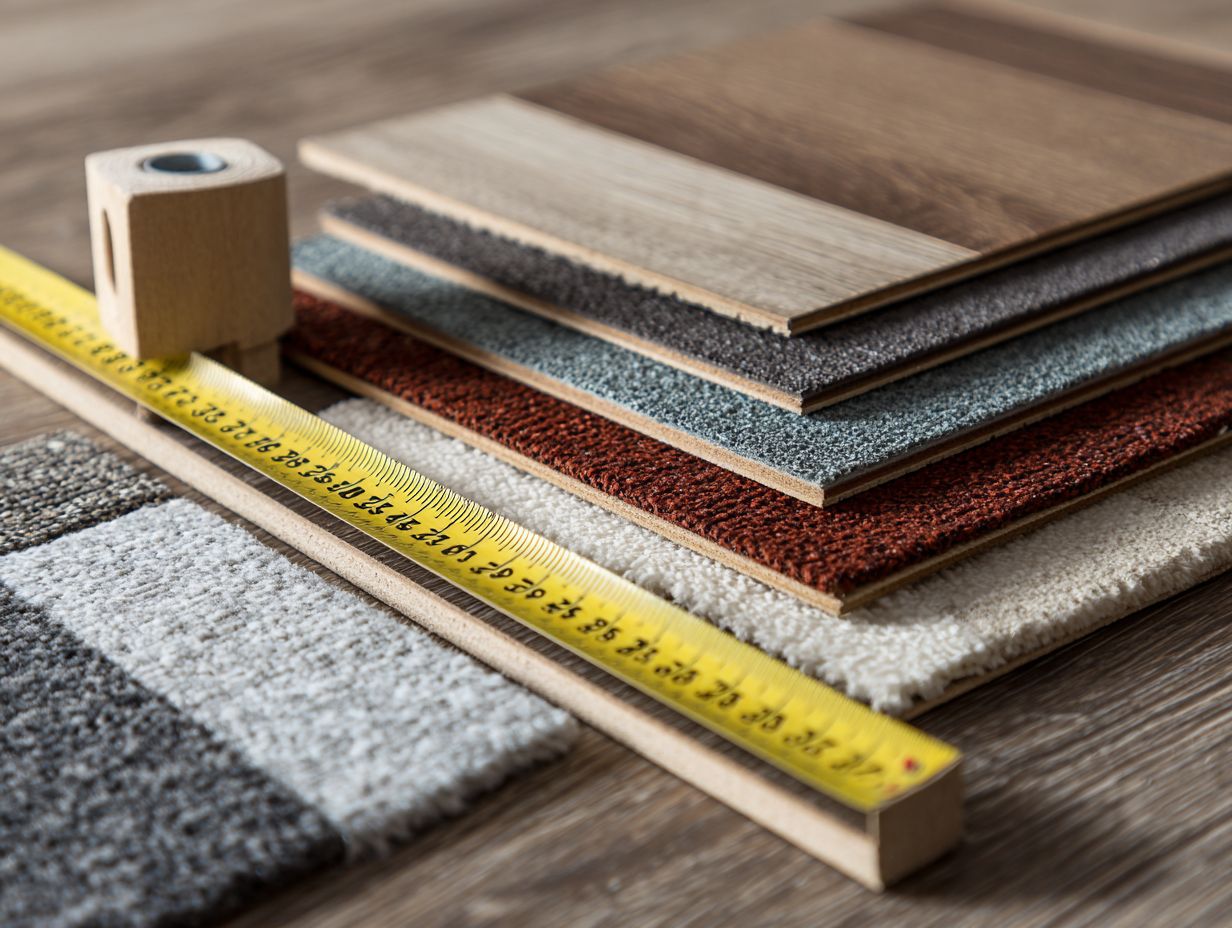
Subfloor and Joist Repair Costs: Joist Repair
The dataset on Mobile Home Flooring Durability and Repair Costs offers a detailed summary of the costs and financial considerations related to keeping up and fixing different kinds of flooring in mobile homes. It encompasses repair and replacement costs for different flooring types, as well as expenses associated with subfloor and joist repairs.
Flooring Types and Costs segment outlines the cost-effectiveness and durability of various flooring materials. For repairs, carpet proves to be the least expensive at $130, whereas wood repairs are the most costly at $450. Other materials like vinyl and tile fall in between, with repair costs of $200 and $275 respectively. The higher repair cost for wood may reflect its material value and the intricacy involved in repair work compared to synthetic or composite materials.
- Considering replacement costs, carpet again emerges as a more affordable option at $800, while wood replacement is significantly higher at $2500. Laminate and vinyl replacements are priced at $1500 and $950 respectively, suggesting that while initial investments might be higher, these materials offer longer durability or aesthetic benefits.
Subfloor and Joist Repair Costs learn about the basic components The replacement of OSB and plywood subfloors is relatively inexpensive at $1.4 and $1.5 per square foot respectively. However, completely fixing the subfloor can add up to high expenses. $1800, potentially due to labor and the extent of damage that needs addressing.
- For joist repairs, the immediate repair cost is about $100, but complete joist replacements can escalate to $5000. This extreme cost reflects the complexity and necessity of maintaining structural integrity in mobile homes.
Overall, the data highlights the need to choose flooring materials that fit your budget and will last a long time. It emphasizes how important it is to do regular upkeep and quick fixes to avoid expensive replacements, especially for parts like subfloors and joists. Homeowners might balance initial costs with long-term savings by considering the repair versus replacement costs and opting for materials that align with their specific needs and environment.
Resources for Further Research
Homeowners looking into flooring choices can find helpful information on manufacturer websites and DIY forums.
For detailed comparisons, go to websites like Shaw Floors and Mohawk Industries to look at their wide range of products.
DIY enthusiasts can turn to guides from This Old House, which often provide step-by-step installation advice for various flooring types.
Also, joining conversations on forums like Reddit’s r/mobiles helps homeowners learn from others who have worked on similar projects by sharing useful tips and experiences.
All these resources can help you make better decisions and enjoy the process.
FAQs about Mobile Home Flooring
Answering frequent questions about mobile home flooring helps homeowners choose the right materials and installation methods.
Frequently Asked Questions
What are some common weight and flex issues with mobile home flooring options?
One common issue is that the flooring may be too heavy for the frame of the mobile home, causing damage or instability. Another issue is that the flooring may not be flexible enough, leading to cracking or shifting.
What are the best flooring options for a mobile home with weight and flex concerns?
Vinyl and laminate are popular choices for their lightweight and flexible properties. Cork and bamboo are also good options as they are both lightweight and able to withstand some flexing.
Can I install hardwood flooring in a mobile home without causing weight and flex issues?
While hardwood flooring is not recommended for mobile homes due to its weight and lack of flexibility, it is possible to install it with proper reinforcement and support. However, you should talk to an expert to make sure it is done properly.
How do I know if my mobile home can support heavier flooring options?
You should consult the manufacturer’s guidelines and specifications for your specific mobile home to determine its weight limitations. It’s important to have an expert check the frame and structure of the house to make sure it can support the extra weight.
What should I do if I notice my flooring is causing weight or flex issues in my mobile home?
If you notice any signs of damage or instability due to your flooring, it is important to address the issue immediately. You may need to replace the flooring with a lighter or more flexible option, or reinforce the structure of your home to better support the existing flooring.
Are there any preventative measures I can take to avoid weight and flex issues with my mobile home flooring?
One way to prevent these issues is to regularly inspect and maintain your mobile home’s frame and structure. Choosing a light and flexible flooring option from the start can prevent issues later on.

